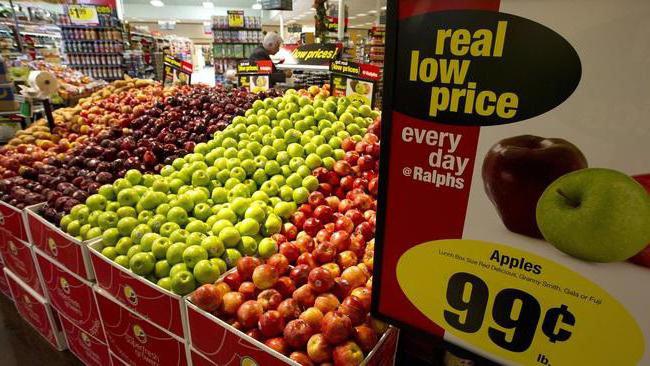In the world market, intense competition between manufacturers of goods exists constantly, but in order for performance on foreign markets to be as successful as possible, a constant increase in the competitiveness of domestic products is necessary. Using the competition of foreign sellers during import allows us to achieve the most favorable procurement conditions.
Concept of competition
Competition (from the Latin "collide") is the struggle of completely independent economic entities for limited economic resources. It is such an economic process in which companies acting on the market enter into economic interaction among themselves, in order to provide the best opportunities for selling their products, while satisfying the most diverse needs of consumers.
The concept of competition is so voluminous that it cannot be adapted to one universal definition that clearly expresses its essence. This is a way of managing, and the special existence of capital, when one of them competes with the other.
There are 5 components of business competition:
- when potential market participants compete;
- existing players or market participants;
- market pressure from buyers to lower prices;
- rivalry of surrogates for services or goods (for example, sellers of leather and leatherette);
- market pressure from suppliers to increase prices.

Competition as a catalyst for economic development
In competition, there is a main distinguishing feature - the property of commodity production, as well as the method of development. In addition, competition plays the role of a spontaneous regulator of all public production of goods and services, and as the ultimate goals, competition leads, on the one hand, to aggravation of market relations, and, on the other hand, to a constant increase in the efficiency of production and economic activity.
Non-price competition
There are two types of market competition - price and non-price. Both of these types have their goals and implementation methods, significantly different from each other.
Non-price competition uses as a method of achieving such goals higher product reliability than its rivals, a more modern and attractive design, and many others. For example, many buyers prefer to overpay for a well-recommended foreign product, than to buy analogue products of local production on inexpensive and favorable terms. Non-price methods of competition also include providing the consumer with a wide range of services, such as staff training, payment of a down payment for the purchase of goods, and others, for example, reduced metal consumption or the prevention of environmental pollution. One of the methods to realize this is advertising, whose role in the modern world cannot be underestimated.
Use of illegal methods
Non-price competition often uses illegal methods, such as industrial espionage, to achieve their goals. Sometimes they lure specialists from other companies, promising higher wages, in order to take possession of any production secrets in the field of technology.
Illegal competition methods also include the production of fake goods, which, according to external data, are similar to genuine, but much worse in quality.
Price competition
In the global economy, competition is usually divided into price and non-price.
As a rule, price competition is based on artificially lowering prices for any type of product.Moreover, the method of price discrimination is often used, which is effective only when a particular product is sold at different prices, and such price differences cannot be justified by differences in production costs.

Price discrimination, as one of the types of price competition, occurs when there are three conditions:
- When the seller is a monopolist or has a certain degree of monopoly power.
- The seller distributes buyers into groups that differ in purchasing power.
- The original buyer is not able to resell the goods or services received.
In most cases, price discrimination is applied in the service sector (cleaning of premises, lawyer services, hotel business and others), in the provision of services for the transportation of finished products; sales of goods that cannot be redistributed from one market to another (this usually applies to perishable products).
Price Competition Strategies
Price competition comes from those distant times of market rivalry, when similar products were sold at very different prices, and lowering their value was the factor due to which the seller seemed to single out his goods from all existing in the market, attracted the attention of consumers and won the main total market share.
This does not mean that price competition is not applied on the market today. It certainly exists, but it always has various forms. Open competition can exist only if the moment has not come when the company has not exhausted its reserves for reducing production and, consequently, increasing profits.
But when a certain price equilibrium is established, any attempt by manufacturers to reduce prices entails a reduction in the cost of their products from other manufacturers. Thus, some of them notice a gradual decline in production, which eventually leads to complete bankruptcy. And this, in turn, opens the way for other firms to the market.
Monopolies as an example of competition
In most cases, price competition as a method of competition itself is used by so-called outsider firms in their struggle against monopolies, which they have neither the strength nor the ability to fight with other methods.
Price methods of competition are also used to penetrate the markets with the offer of new, previously not produced goods, which monopolies in those areas where the advantage is not on their side are often not neglected.
An example of price competition is monopolies that have the ability to control the production and sale of one or more varieties of goods or services. Such enterprises are endowed with a lot of privileges in the markets, they are structures in which there is no competition.
Thus, during direct price competition, manufacturers try by all available methods to report a decrease in prices for new and existing services and products on the market. It is important to understand that the modern consumer has a lot of choices.